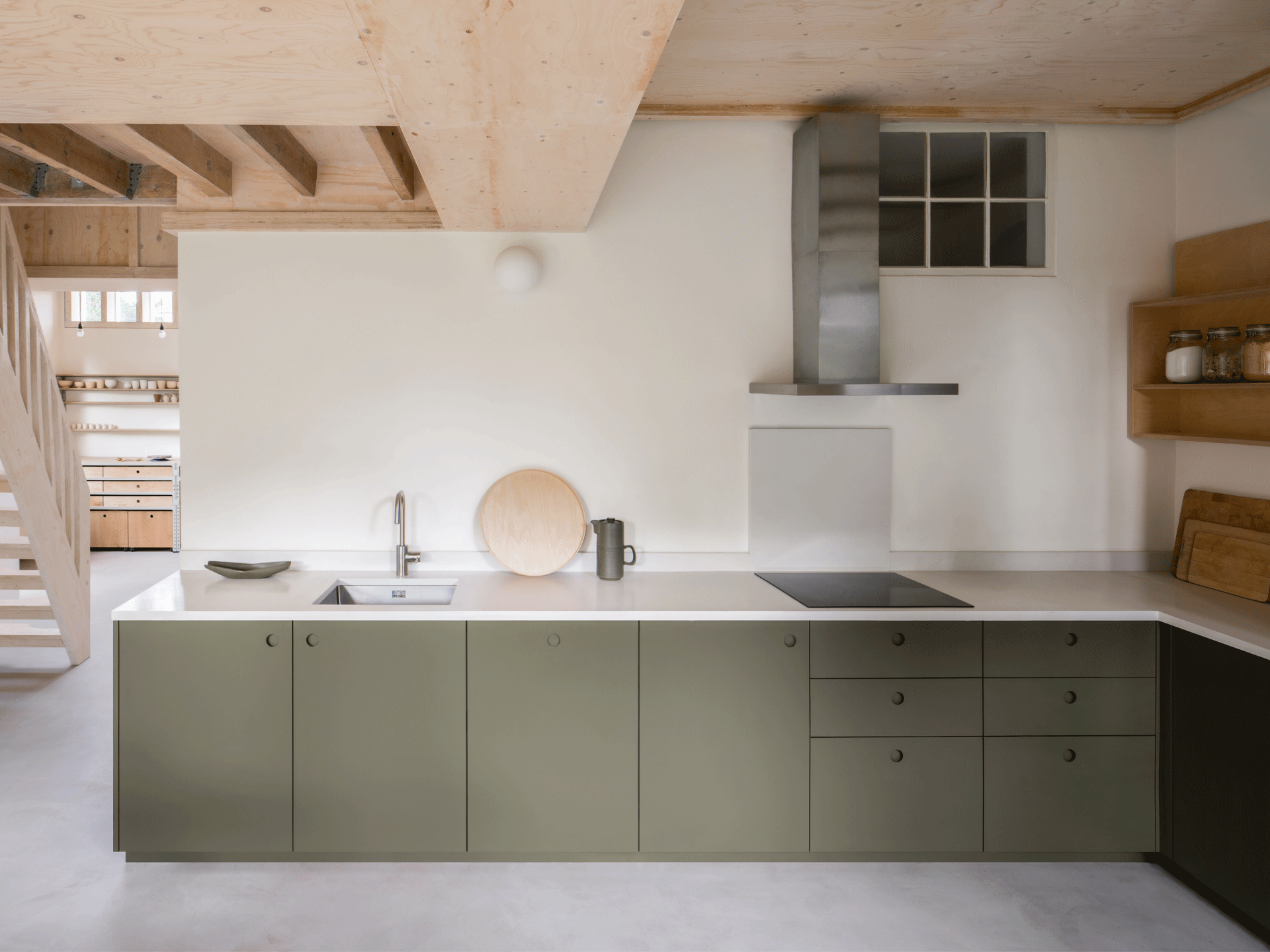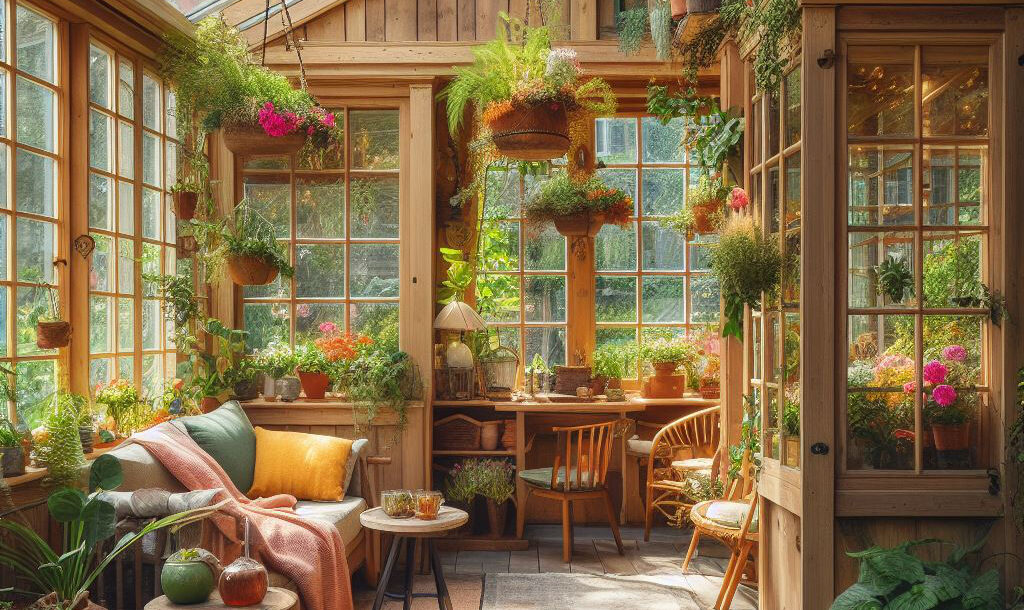Kitchen cabinet replacement doors: the ultimate buyer’s guide
Get a beautiful bespoke look by upgrading existing units or low-cost new ones with on-trend fronts
In the past, it was usual to buy an entirely new kitchen to update a shabby or outdated one, mainly due to the scarcity of design options for revamping units with new fronts.
But in recent years, several companies offering kitchen cabinet replacement doors came to market.
These relative newcomers retail a range of fronts to transform existing carcasses or to team with new low-cost units.
As a result, there are a far greater number of replacement styles, colours and finishes to choose from.
And most offer cutting-edge designs that are ideal for creating a contemporary scheme that looks far more expensive than it cost.
Cost and eco benefits
Opting for kitchen cabinet door replacements has benefits compared to starting from scratch.
Affordability is a significant one. It’s possible to update existing carcasses in good structural condition with new fronts, for less than the cost of buying an entirely new kitchen.
Plus, if you want everything new, buying low-cost carcasses from the likes of DIY kitchens or IKEA gives you the design freedom to select from among their fronts or opt for something from a replacement supplier.
Reducing waste has an obvious environmental benefit. Swapping only the existing fronts prevents perfectly functional older carcasses ending up in landfill.
If carcasses, drawers, shelves, and other interior fittings are in good condition and work well, there’s little reason to throw them away.
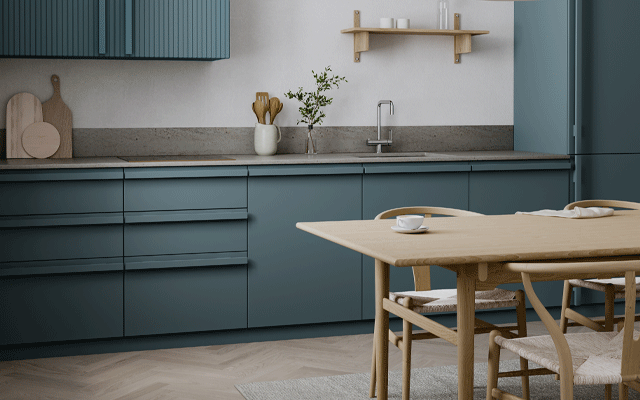
This kitchen with cabinets in Muddy Blue and Bar handles, £2,235.05, Superfront
But to get a great result when buying and installing kitchen cabinet door replacements, there are some pointers to follow.
Are they suitable for my units?
Some replacement door companies manufacture fronts to custom sizes that will fit the dimensions of any carcass. These include Naked Doors from Naked Kitchens and HØLTE.
Other firms specialising in kitchen cabinet door replacements offer a full range of sizes specifically for IKEA and Howdens units. Examples include Superfront, which supplies for both IKEA Faktum and Metod units. While HUSK supplies primarily for Howdens carcasses, IKEA Metod and DIY Kitchens.
All these brands make it clear on their websites exactly how they operate and what carcasses their fronts work with.
So, to avoid setting your heart on a style that isn’t suitable for your carcasses, do some research before browsing the designs.
When it comes to door styles, options range from plain slab panels, Shaker-style and routed-pattern fronts.
There are paint finishes with a myriad of colour choices or timber veneers with different wood species to choose from.
Plus, a broad selection of integrated or add-on handle designs. Some companies also supply worktops.
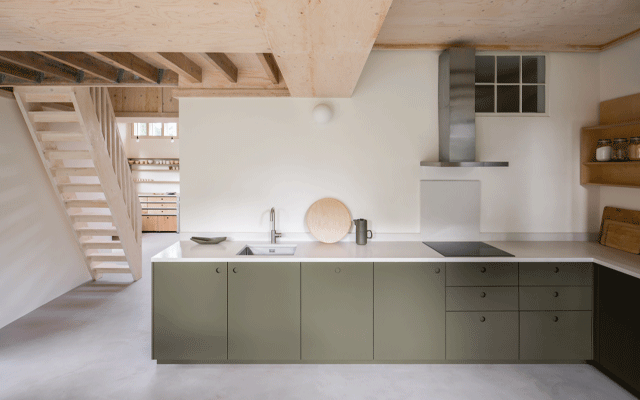
Ladbrooke fronts in Samphire. Base cabinet slab doors with paint finish, from £154, for 797 x 597mm, Naked Kitchens
To help you make a decision on the style and finish, samples are commonly available with prices ranging anywhere from 75p up to £25 per piece, depending on the supplier and the material.
Bear in mind, it takes several weeks from placing an order to receive delivery of your new fronts.
Choosing a supplier
Local high-street companies offering kitchen makeover services often take care of every aspect of the process, from taking measurements to installation.
Even when buying from a primarily supply-only brand, some offer an optional in-house design service, usually for a fee.
“We are used to dealing with slightly unique requirements and have a bespoke service to assist,” says Dave Young from HUSK. But you can also choose to take a completely DIY route.

Terra high pressure laminate (HPL) fronts, from £1,850 for a small kitchen, HUSK. Fold Round Front Mounted handle in brass, £21.95, Fold Long D Shape Front Mounted handle, in brass, £29.95, Plank Hardware
In which case, after selecting a front style, you must measure up for each door, drawer front, side panel, plinth and so on, before placing an order. There are usually instructions on how to go about it on the kitchen cabinet replacement doors specialists’ websites. But if you lack confidence or need help the supplier should be willing to offer further advice.
Grab your tape measure
It’s essential to take accurate measurements, in millimetres, as precisely as possible.
“There needs to be a 3mm gap in between two doors to ensure they open smoothly and do not catch,” says Jayne Everett from Naked Kitchens.
“Over size the depth of the end panels, as these can be cut down to suit and allow for scribing to uneven walls. We manufacture doors to the sizes supplied by the client, so add on any scribing required.”
Use existing fronts as a guide. Or if you are buying new carcasses from a company such as Ikea or Howdens, which has drawn a detailed plan with dimensions, follow the dimensions given on the blueprint.
Another issue to consider is the thickness of the replacement fronts, which varies from supplier to supplier and sometimes with different materials.
This may have an impact if you plan to team replacements with some existing doors, as they may fit slightly proud or recessed from what’s already in place. And don’t forget to allow for any end panels.
“Naked Kitchen fronts are predominantly 23mm thick, explains Jayne. ‘So when measuring up this must be taken into account for the end panel thickness.”
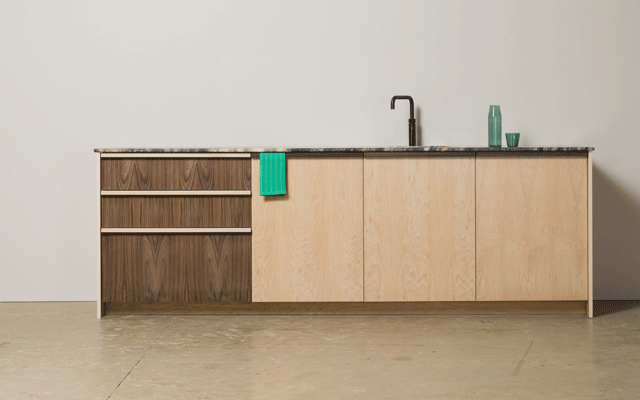
ONE Timber collection; Walnut drawer fronts with Pull handles in Maple, Maple doors with Pull handles in Walnut, Maple side panels, Maple plinth, from £2,860, HØLTE
Kitchen cabinet replacement doors: the finer details
Tom Ginnett at HØLTE explains how to get the best result
- What’s the best way to measure up?
“It depends on the kitchen. Most cabinets follow standard dimensions – 300mm, 400mm, or 500mm widths – but it’s essential to identify the brand — Howdens, IKEA, or another. If the brand is unknown, accurately measure every panel you intend to replace, down to the millimetre. For less common replacements, HØLTE often supply doors without pre-drilled hinge holes, allowing fitters to adjust on-site. Providing plenty of photos is also helpful to guide us in advising on measurements.” - How precise do measurements need to be?
“Very precise. Small tolerances of around 2mm are generally acceptable for most kitchens.” - When might achieving a good fit be more complex?
“Corner cabinets and integrated panels sometimes pose challenges. For instance, removing or replacing integrated panels risks damaging surrounding cabinets. It’s crucial to approach these with care. Hiring an experienced fitter is invaluable—they will spot potential issues and navigate them effectively. Appliances can also prove tricky, particularly when ensuring precise alignment with cabinets or managing tight spaces for installation. Mismatched dimensions, ventilation requirements, or clearance issues can complicate the process. A professional installer can help measure accurately, adjust cabinets, and ensure appliances fit seamlessly.” - Does the thickness of a replacement door matter?
“Yes, especially for cheaper carcasses. Thinner doors on budget kitchens may struggle with alignment when replaced with bespoke, heavier doors. Quality ironmongery is also important, as low-quality fittings may not support heavier replacements.” - Can a DIYer install replacement doors?
“Replacing doors is relatively straightforward for a competent DIYer. But, drawer fronts, side panels, and fillers require more technical skill, such as using a circular saw and understanding how to scribe panels. An experienced kitchen fitter or cabinetmaker is recommended for the best results. Attention to detail is key when matching old and new components.”
READ MORE:

